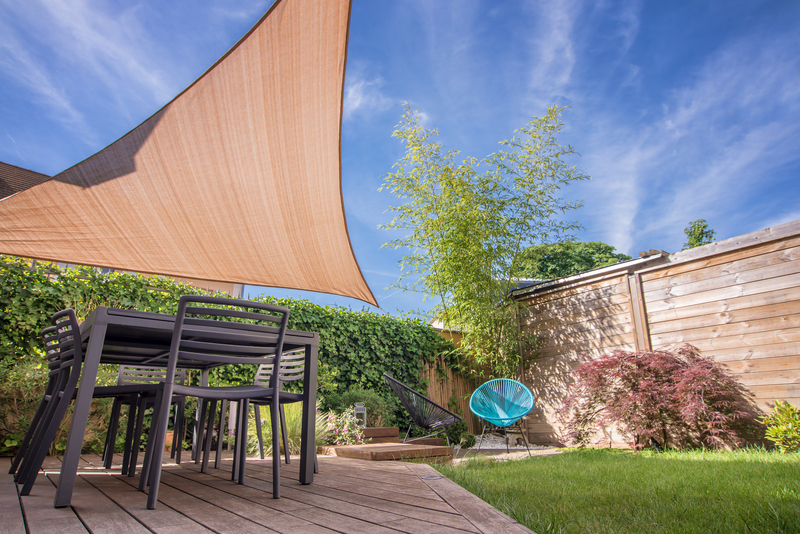Craft a Stunning Garden without Breaking the Bank
Posted on 05/09/2025
Craft a Stunning Garden without Breaking the Bank
Are you dreaming of a lush, vibrant garden but worried about the costs? Designing a beautiful garden on a budget is absolutely achievable! Whether your space is large or small, it's possible to craft a stunning backyard or transform a modest plot into an outdoor paradise without emptying your wallet. In this comprehensive guide, we'll reveal practical, cost-effective strategies to help you create a gorgeous garden--and show that style and creativity matter more than big spending.
Why Garden on a Budget?
A well-curated garden enhances your home's curb appeal, supports your wellbeing, and can even yield fresh produce. But gardening expenses--from plants and tools to decor and soil--can add up fast. Gardening frugally encourages creativity, sustainability, and clever resource management. More importantly, a beautiful garden without breaking the bank brings a sense of pride and accomplishment.
- Save Money for other projects or hobbies
- Reduce Waste by reusing and recycling materials
- Personalize your garden with unique, handmade elements
- Learn New Skills as you take on DIY projects

Setting Your Garden Goals and Budget
Assess Your Space and Plan
Before you buy anything, analyze your garden area. Consider its size, soil, sunlight, and existing features. Visualize what you want: wildflower haven, modern patio, vegetable patch, or a mixed border? Sketch your ideas and list your must-haves.
- Measure dimensions
- Check sun and shade patterns
- Note current plants and structures
- Prioritize features you love
Make a Realistic Budget
Determine how much you can invest in your garden makeover. Allocate funds for essentials--such as soil, compost, and seeds--then earmark the rest for special plants or focal points.
- Start with a basic budget spreadsheet
- Monitor expenses as you go
- Reallocate funds to accommodate new ideas or deals
Affordable Garden Design Ideas
1. Start from Seeds and Cuttings
Buying mature plants can be costly. Growing plants from seeds or propagating cuttings from friends or neighbors is one of the cheapest ways to fill your garden with life. Seed packets cost a fraction of the price of nursery plants and often contain enough seeds for multiple seasons.
- Choose easy-to-grow annuals like marigolds, cosmos, or zinnias
- Propagate herbs such as mint, basil, or rosemary from kitchen cuttings
- Swap seeds and cuttings locally--many communities have exchange groups!
2. Embrace Perennials and Native Plants
Perennials return year after year and save you money in the long run. Native plants, adapted to your local climate, usually require less water and care, reducing costs on maintenance and irrigation.
- Research local native species with minimal requirements
- Divide mature perennials in spring/fall and replant for more coverage
- Attend plant swaps or community sales for bargains
3. DIY Garden Decor and Features
Fancy garden sculptures and furniture can be expensive. Repurpose everyday items into unique features:
- Use old pallets to make rustic planters or compost bins
- Create stepping stones from leftover tiles or concrete
- Transform glass jars into lanterns or bird feeders
- Paint rocks as colorful plant markers
4. Mulch and Compost for Free
Mulching suppresses weeds, retains moisture, and beautifies your beds. Instead of buying mulch, use grass clippings, leaf litter, wood chips, or shredded paper. Composting kitchen scraps and yard waste creates rich, nutritious food for your plants--at zero cost!
- Start a simple compost heap in a shaded spot
- Shred cardboard or newspaper for alternate mulching
- Ask tree services for free wood chips
5. Upcycle and Reuse Materials
Before tossing out that old bucket or broken chair, consider its garden potential. Upcycling materials saves money--and adds personality.
- Turn tires into colorful flower beds
- Use wine bottles for garden edging
- Convert rain gutters into vertical planters
- Get creative--almost any sturdy item can hold soil!
6. Choose Low-Cost Ground Covers
Lawn seeds or rolls can be expensive and labor-intensive. Low-maintenance ground covers like creeping thyme, clover, or sedum provide color, control weeds, and can be planted from seed or as small plugs.
- Spread seeds evenly over prepared soil
- Water gently until established
- Enjoy a natural, pollinator-friendly carpet at a fraction of the cost
7. Smart Shopping and Freebies
Save big by shopping strategically for garden supplies. Scout yard sales, online marketplaces, and off-season clearances for bargains.
- Buy end-of-season plants at deep discounts
- Ask local garden centers about clearance racks
- Check neighborhood groups for free or tradeable plants, pots, and tools
Designing Your Budget Garden
Maximize Visual Impact
You don't need money to make a garden look expensive! A few tricks can make your modest garden appear lush and inviting:
- Create focal points using a bold pot, colorful bench, or statement plant
- Layer plants by height and texture for depth
- Use repeated colors or shapes for a cohesive look
- Frame views with arches or DIY obelisks
- Add string lights or solar lanterns for a magical evening glow
Incorporate Vertical Elements
Going vertical saves space and money. Hang baskets, stack pots, or train climbing plants up fences and trellises to create a lush, layered effect.
- Try beans, sweet peas, or nasturtiums for quick cover
- Build a simple trellis with bamboo canes or old branches
- Use wall-mounted planters for herbs and succulents
Combine Edibles and Ornamentals
Mixing vegetables, herbs, and flowers increases productivity and beauty. Edible plants often have attractive forms--think rainbow chard, purple basil, or frilly kale.
- Edge borders with low-growing herbs
- Interplant tomatoes with marigolds to deter pests
- Succession sow salad greens for continual harvests
Practical Tips for Maintaining a Beautiful Garden on a Budget
Water Wise Gardening
Smart watering saves time and money. Install a rain barrel to collect free water. Group thirsty plants together and use drought-tolerant species elsewhere.
- Water early morning or evening to cut evaporation
- Mulch generously to keep soil moist
- Recycle "grey water" from washing fruits and vegetables
DIY Pest and Disease Control
Commercial products are costly and sometimes unnecessary. Natural remedies and vigilance are often all you need:
- Hand pick pests
- Spray diluted soap or garlic solutions for aphids
- Encourage helpful insects like ladybugs
- Rotate crops and keep beds tidy
Seasonal Routine for Ongoing Savings
A consistent routine lets you spot problems early and divides chores into manageable tasks--saving money and effort long-term.
- Spring: Sow seeds, divide perennials, start compost
- Summer: Weed regularly, deadhead flowers, watch for pests
- Autumn: Collect seeds, mulch, trim dead plants, tidy tools
- Winter: Prune shrubs, plan next season, repair structures
Inspiration: Real-Life Budget Garden Transformations
From Scrapyard to Sanctuary
Anna, an urban gardener, transformed her neglected backyard using only $250. She sourced free bricks, built a fire pit, and used old bathtubs as flower beds. Seeds collected from neighbors and local wildflowers filled the garden--now a haven for butterflies and songbirds.
A Family Food Forest
The Rivera family extended their suburban lawn with a patchwork of affordable raised beds built from recycled pallets. They grew tomatoes, beans, and herbs from seed, layered thick mulch to reduce watering, and planted fruit trees purchased in winter sales. Their delicious, homegrown produce cost less than one grocery trip each month!

FAQ: Crafting a Gorgeous Garden on a Budget
- What's the cheapest way to start a garden?
Begin with seeds, reuse containers, and collect cuttings from friends. Focus on hardy, fast-growing plants. - How can I get free plants for my garden?
Join local plant-swap groups, ask on community forums, and propagate from existing plants. - Can I garden if I have very little space?
Absolutely! Use vertical planters, hanging baskets, or even windowsills to grow a variety of plants. - Does a low-cost garden require daily maintenance?
With mulching, hardy plants, and smart design, your garden can remain beautiful with minimal upkeep.
Conclusion: Design Your Dream Garden Without Overspending
With a blend of creativity, resourcefulness, and a passion for plants, anyone can craft a stunning garden without breaking the bank. Start small, grow what you love, make the most of free or inexpensive resources--and watch your outdoor sanctuary come alive. Remember, the most breathtaking gardens are defined by joy and ingenuity, not by how much you spend.
Ready to transform your garden? Take these budget-friendly tips and dig in! Your dream garden is within reach--happy gardening!

